Electric cars are big business in Norway. If you've never driven one, this is the guide for you.
Few activities give the same sense of freedom as a road trip. But are electric cars suitable for long road trips? Can you realistically drive around the south of Norway for several days without using fossil fuels a single time?
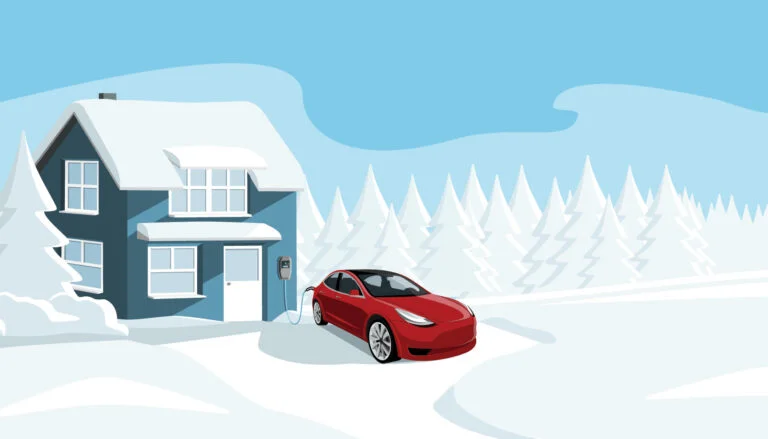
We tested this for you and found out that the answer is yes, absolutely! Read on to get our best tips on how to prepare, what to look out for and pitfalls to avoid. We’ll even tell you how you can go on your very own electric car vacation on your next trip to Norway.
Electric cars in Norway
Norway is leading the world in adopting electric cars. In 2021, 22.1% of all cars in use in the country were electric–and that proportion is increasing fast.
The market share of electric car sales in Norway was 65% in 2021, and hit as high as 86.2% in the final month of the year. For context, this is how those figures compare to some other countries:
| Country | Market Share of EVs in 2020 | % of cars in use in 2020 |
| U.S. | 2.2% | 0.7% |
| U.K. | 10.7% | 1.38% |
| Canada | 2.0% | 0.73% |
Why electric cars are so popular in Norway
What makes electric cars so popular in Norway is the Norwegian fee system on car sales. New car sales are hit by heavy taxes and fees compared to many other countries. This has been the case for many decades.
When electric cars came on the market, the government decided to reduce or completely waive some of these fees, to encourage electric car adoption.
This means that at the time of writing, a new, fully electric Nissan Leaf starts at NOK 219,900, while a similar-sized fossil fuelled Ford Focus starts at NOK 395,100.
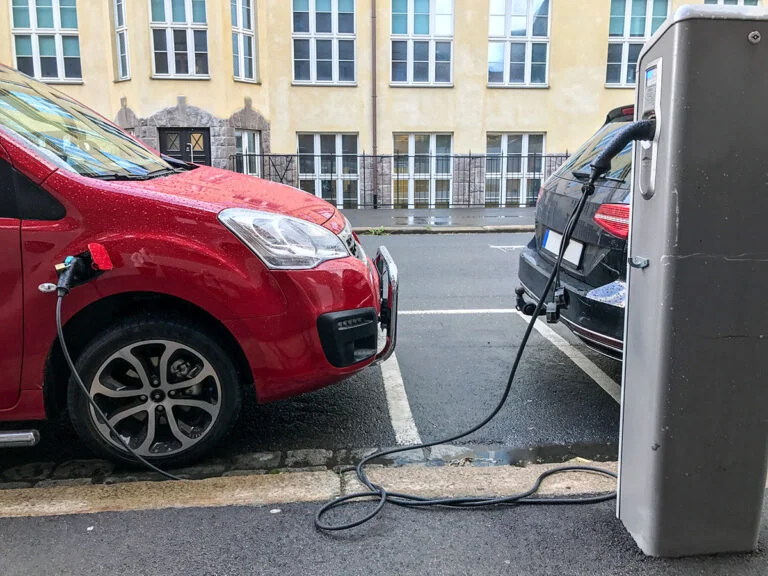
Such huge price differences, combined with the fact that charging is generally much cheaper than refueling, make electric cars a no-brainer in Norway.
Norway: the ideal place for a test drive
Norway’s scenic, slow-paced roads and numerous fast-charging stations make it an ideal place to go on an electric car vacation. The reason the reduced speeds are an advantage is that they typically help in getting the most range out of an electric car’s battery.
Another fun part of driving an electric car in Norway’s fjord country is that the battery actually recharges on steep downhills.
In a traditional car, braking on a steep downhill wastes energy. Electric cars recoup at least part of that energy and store it back in your battery for later use.

Our electric car test drive
For our trip, we were driving a Nissan Leaf 2020 model with a 62kWh battery, which gives around 420 km (260 miles) on a full charge.
Our Norwegian road trip was a nine-day, 2726 km (1704 miles) loop starting and ending in Trondheim, and reaching all the way down to Kristiansand. Highways were mostly avoided in favour of scenic country roads.
How to charge an electric car in Norway
First let’s go through the basics of electric car charging. There are three speeds at which you can charge. For the sake of simplicity, let’s call them slow, medium and fast.
Slow charging
Slow charging, also called trickle charge, is when you plug your electric vehicle in a normal electrical outlet. As the name explains, this method of charging takes time. The battery will draw no more than 4 kW of power with this method.
Fully charging our Leaf would take anything from 10 to 14 hours, depending on the state of charge at the beginning of the session.
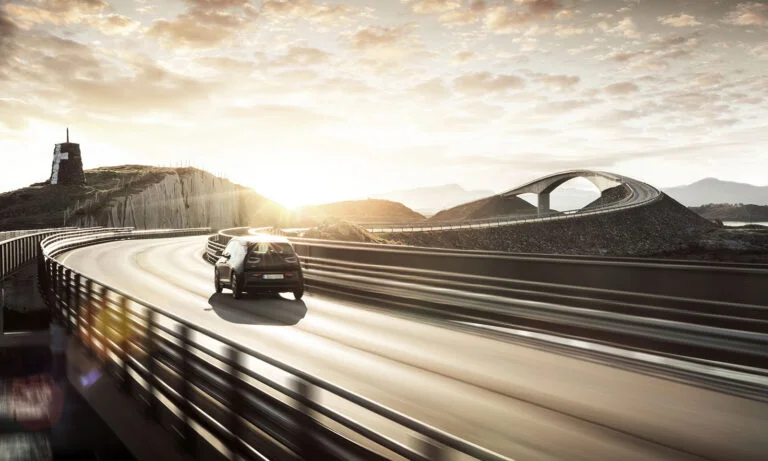
If that seems unreasonably long, remember that on a typical trip, you will often check in to your hotel at some point in the late afternoon or early evening, and then leave the following morning. This gives the trickle charge method more than enough time to bring the battery to 100%.
A few things to consider when charging via a standard electrical outlet: first, make sure you have permission. This may seem obvious, but you will be drawing quite a bit of power from that outlet, and most businesses will want you to pay for that service.
Another reason to ask for permission is that there are amperage requirements that need to be respected for this type of charging.
Read more: Driving Licences in Norway
The vehicle’s manual can tell you exactly what those requirements are. A hotel or restaurant that allows people to use an outlet for charging will normally have checked what the amperage on that particular circuit is.
Last but not least, make sure the wire is snaking on the ground and not coiled up on itself. Coiling it up can result in heat, damaging the wire. In the worst case, it can cause a fire.
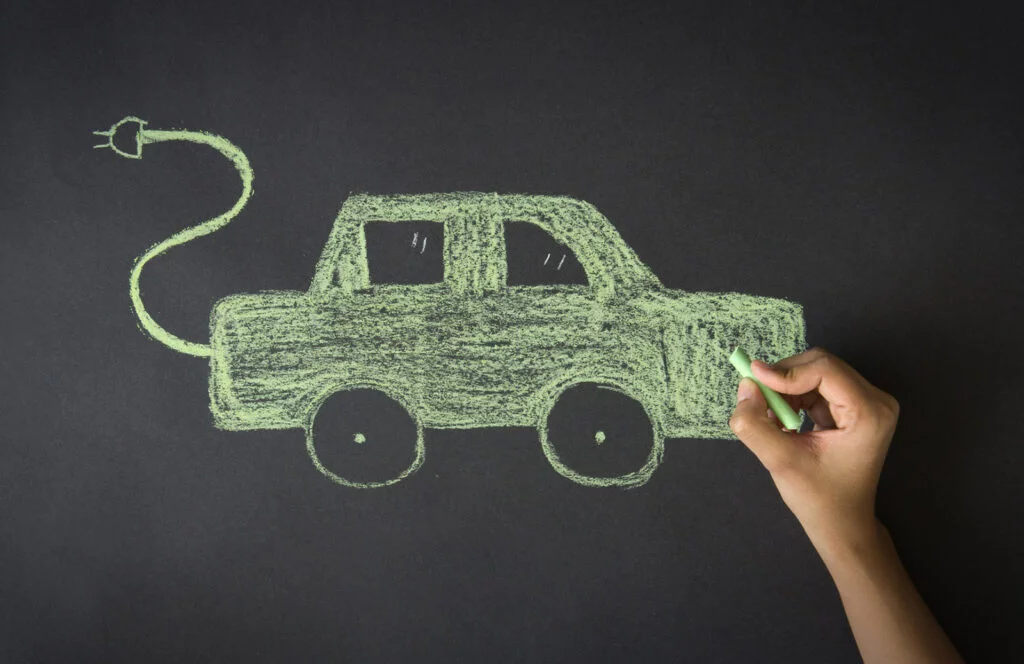
Medium-speed charging
This type of charging uses the “type 2” cable, and provides up to 43 kW of power to your car. Very often, in Norway, this type of charger will give somewhere between 7 kW and 22 kW of power.
The speed at which you’ll charge is directly related to that number. No need for complicated calculations though: just plug in and the car will let you know how long it needs.
Charging stations of that type are less expensive to set up than fast charging stations, so there are more of them. They are often found in public parking areas so do keep a lookout for them.
Fast charging
There are two widespread standards for fast charging: CHAdeMO and CCS. Teslas also have their own standards. These methods typically provide anywhere from 50kW to 150 kW (it can be more in theory, but in practice 150 kW seems to be the limit at the moment).
Due to the inner workings of batteries, charging speed goes slower and slower as you get closer to 100%. Because of this, it is generally considered impolite to charge your car above 85% when there are other people waiting (because getting the battery from 85% to 100% can take as long as getting it from 30% to 85%).
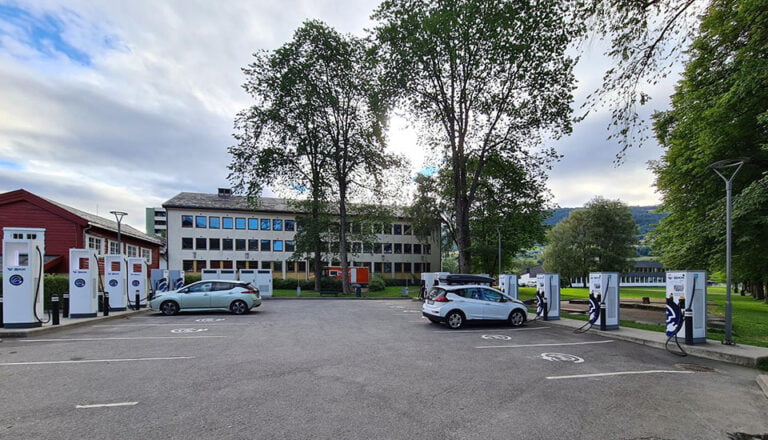
Politeness aside, it is a waste of time to go far above 80% on a fast charger, so it is best avoided unless absolutely necessary.
How to start the charging session
Unless slow charging with a normal wall outlet, starting (and ending) the charging session is best done with a smartphone. Annoyingly, each charging operator has its own app, so be prepared to download quite a few of them.
Charging sessions can also be started via SMS or using an RFID chip. This chip may be provided to you by the car rental agency, but be aware that different chips work for different operators, so you will still most likely end up having to download a bunch of apps.
Planning your electric car road trip in Norway
Electric cars are ideal for sightseeing trips, because these trips typically include a number of stops.
Read more: Rules of the Road in Norway
When planning your itinerary, try to see if there are convenient spots where you can combine a stop (lunch, sightseeing, hike) with a charging session. Obviously, try to stay only at hotels that offer overnight charging.
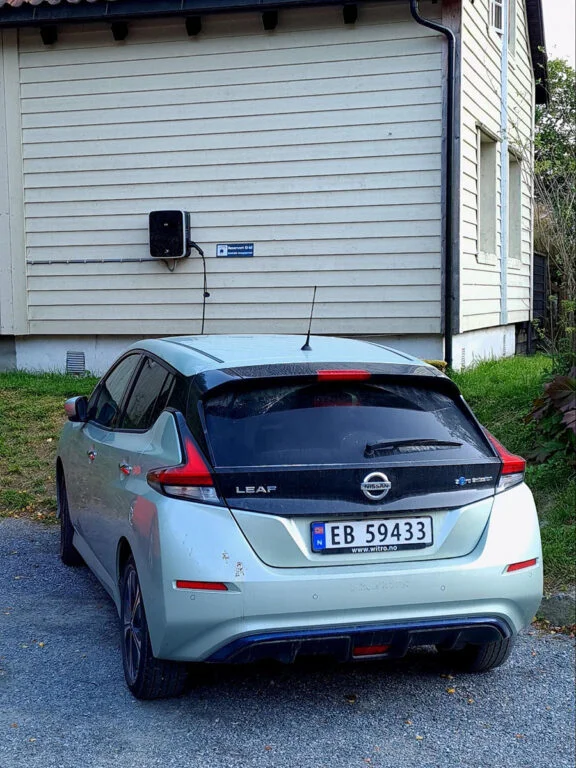
Since you generally won’t get your battery to 100% from fast charging, the only time you’ll enjoy the full range offered by your car is when you start the day after slow/medium-charging overnight.
Finding electric charging stations in Norway
Google Maps contains information about many charging stations, but since the data often comes from the users themselves, it may not always be up to date.
The electric car association of Norway has a handy guide that contains a map of charging stations. The different apps also have maps (but only of their own stations).
Your car’s own navigation system may also be able to point you towards some charging stations, but again, be aware that it may not be entirely up to date (more stations may exist than what it knows about).
Charge when you can
If you remember only one thing from this article, let it be this: charge when you can. You should never put yourself in a situation where you are 100% dependent on making it to a specific fast-charging station.
Charging stations rely on complex technology, and don’t always work. On one occasion, we witnessed a whole station being knocked out of order during a thunderstorm.
If you’re travelling during a tourism rush you may experience unreasonably long queues, so it’s always good to have a plan B.
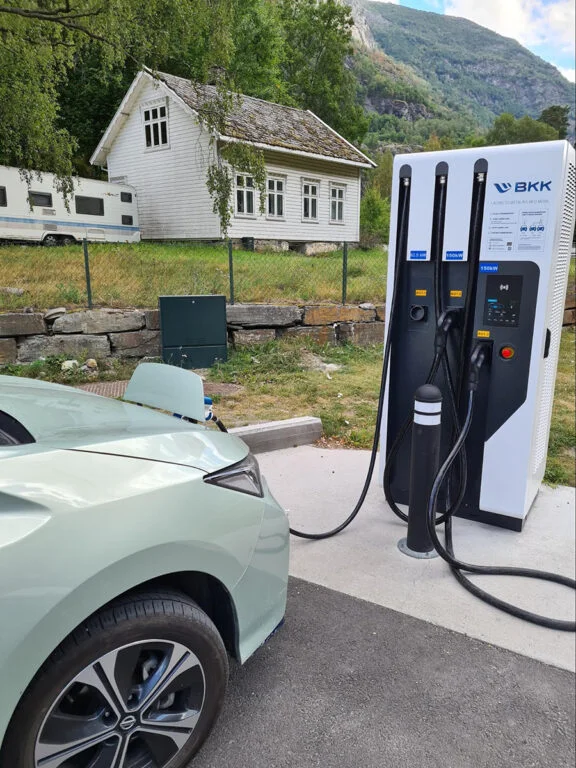
This means that if you get to a charging station when your battery is at 55% and you see that it’s available with little to no waiting, just top up a little bit. It may save the day down the road.
Other benefits
Since Norwegian authorities wish to encourage people to have electric cars, you may get other perks depending on where you are.
In certain cities, electric cars can drive in bus lanes, or park for free. Sometimes, they are exempted from road tolls, or benefit from a reduced fare on ferries.
These perks are slowly disappearing as electric cars are getting more and more popular, but there are still quite a few of them out there.
Our verdict
Going on a road trip with an electric car turned out to be simpler than expected. We were a bit apprehensive before leaving because we had read about long queues and frustrated electric car drivers in the media.
It’s difficult to say if the people complaining were just bad at planning, or if we were particularly lucky not to encounter major problems.
The only difference with a traditional road trip was that we had to keep in mind the necessity for charging. On many days, starting with a full charge was enough to get us to our next destination.
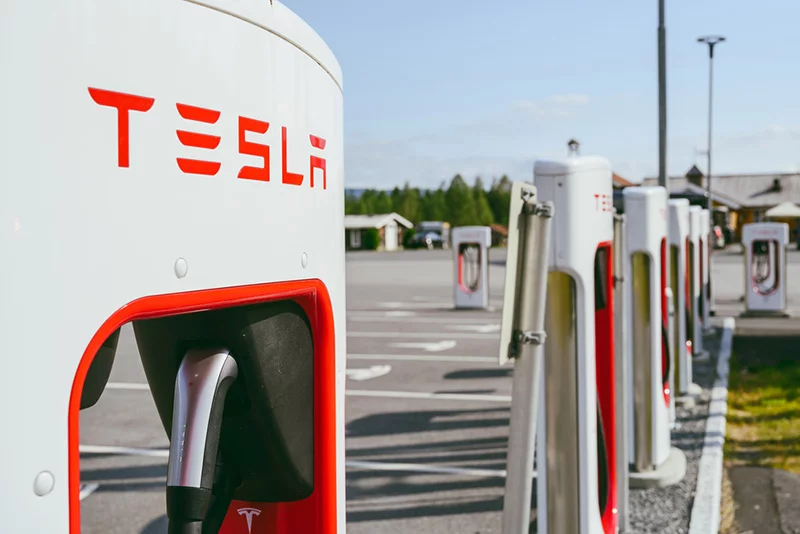
The number of fast charging stations in Norway is ever-increasing, but so is the number of electric car users. In periods of high traffic (like the second part of July, when we did this test), the charging infrastructure is pushed to the limit.
In the summer of 2021, this was compounded by the fact that many Norwegians decided to vacation in their own country due to the Covid-19 pandemic.
Many business owners wish to open fast-charging stations of their own, but depending on the state of the grid in their area, it sometimes means they must finance very costly grid upgrades.
So far, the government has been reluctant to subsidize new charging stations, because their numbers are increasing without subsidies.
Hopefully, the pace of development of the infrastructure will follow the demand in the coming years, to continue to make road trips like the one we described possible.
Your own electric car vacation in Norway
Tempted to take an EV for a spin after reading this article? It’s as simple as renting a car! Most car rental agencies now offer electric cars.
You’ll generally pay more per day than if you’re renting a fossil fuel car, but should be able to recoup that money (and more) by not having to pay for expensive fuel.
Have you already been on a road trip with an electric car in Norway? Tell us about your experience in the comments!


What can you tell us about driving an electric car in winter, especially how does temperature effect performance and the charge range of the vehicle? How do they handle in snow?
Hello there 🙂
Electric cars handle just as well as fossil-fuelled ones in the winter. Often better in fact, since many of them have four-wheel drive. Of course, it’s extremely important to have winter tyres (they make much more of a difference in the handling and safety than whether or not the car is electric).
Some people swear by spiked tyres. I personally prefer non-spiked ones, since no spikes allows for the use of an even softer (and stickier) rubber.
As for the battery, it does get a performance hit at cold temperatures. This means on average that your range will be reduced by 20%.
Drove from Arendal to Paris on my audi e-tron 55 sportback and was pretty simple
My wife and I rented a 2019 Hyundai Ioniq Hybrid for a week and a half in Norway in September/October 2019. It came with a cable to charge it. (I drive a 2008 Ford Escape Hybrid in the USA but it doesn’t charge with a cable.) Here is something to keep in mind…while the hotels we stayed at charging stations, the AirBnB rooms did not. They were often private homes or apartments.
It was a great car. We averaged around 61 miles to the gallon.
are there any free chargers?
There are but they are an absolute rarity. And usually combined with some other service you have to pay for (municipal parking for example, or at a hotel). Don’t expect more than 4-7 kw/h.
How much do typical charging stations cost?
I can’t really give a very useful reply as there are too many variables. The speed of the charger, its geographical location within Norway, the pricing scheme adopted by the company owning that given charger (some have you pay only by kWh, others use a formula that takes into account the time spent charging).
As an example, last July I fast charged a Kia Soul from 49% to 85%, which equates to 12.39 kWh. It cost 63.39 NOK (7.20 USD or 5.52 GBP). Keep in mind the price of electricity was generally lower back then (a conflation of circumstances has caused it to skyrocket in Norway recently).
Perfect !!! I´ll be driving a Tesla S100 from Portugal to the Nordkap.
In most Rental car sites, I don’t see an EV Car option …Can you recommend what Rental companies do offer it ? Thanks !
I found out that Hertz offers VW ID3 and ID4.
hi, I’m from Germany and will be visiting Norway soon. I already rented an EV for my trip. I don’t know how to prepare for the charging situation. Somewhere I read that some providers demand a norsk adress or telephone number during the registration. Since I’m a tourist I don’t have either. What apps sould I use? I will be staying in Oystese. Thank you!
Hi Daniel, we’re planning a Norway EV road trip end of May for 3 weeks. Going north from Tromso to Havoysund doing an overnight Port to Port to the Lofoten then travelling down the coast to Bergen. Your EV trip didn’t go so far north. Do you have any advice about going that farnorth with an EV? Also not planning to do more than 300kms in a day. Any advice? Regards, Stuart
Hi there,
As you say, I haven’t been that far up, but I do know EVs are increasingly popular in the North.
To be on the safe side, I would recommend charging whenever you can (as opposed to when you absolutely need to). Better top up a bit when you’re at 60% than skip the opportunity and find out that the next station you intended to use is out of order.
Also, if you can, stay at hotels that have charging possibilities, so that you can start the day at 100%.
Have fun!
Hi. I’d like a question regarding parking of EVs in underground garages beneath residential buildings. Are there any limitations set in place due to the diffuculty of suffocating a lithium ion battery fire? Thanks for your reply! Juan
I may drive a few hundred miles a day. Even Tesla’s mileage are over what you can really achieve. Unless one charge can really go over 500 miles, I am not going to use electric car on road trip.
Just got back from Norway. Rented an electric (half the price of an ICE) from Hertz – Cupra Born (Spanish made stablemate of VW Id.3) with about 400 kms on a full charge (58 Kw). Drove north from Oslo to Opdal then west to Kristiansund and then south thru Geiranger, Stryn to Bergen, then to Stravanger and back to Oslo via Kristiansand. Guessing around 2000 kms total. Was able to find fast chargers almost everywhere (Circle K was the best). First time driving electric and was a very good experience but charging time and some anxiety finding a working charger was a constant concern (a number of chargers were out of service). Plus having to download all the apps was a pain, although the Hertz recommended Elton app supported almost all chargers (including Circle K). Torrential rain on the last day (total wipeout) and was very surprised at how much power the wipers sucked out of the battery (had to run it all the time), so watch out for that. Plus even turning on the heat or seat warmer for a little bit was impacting the range, so had to dress warmly while driving and avoid using heat. Couldn’t do anything about using the wipers though, and ended up charging the car 3 times on the last day!
This is hilarious, I’m suspecting a defective motor on the wipers. It just ain’t possible they suck so much power 🙂